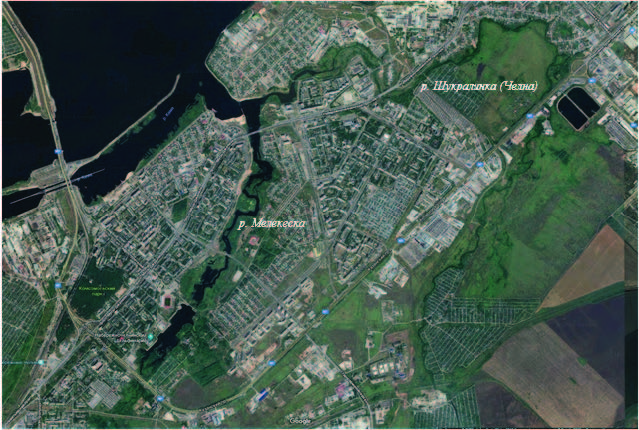Sediments of the Melekesskij bay of the Nizhnekamsk reservoir
Keywords:
sediments, sedimentation, pollution, dredging, Nizhnekamskoe reservoir, Нижнекамское водохранилищеAbstract
The characteristics of the composition, physical and chemical properties of sediments of the Melekesskij bay of the Nizhnekamsk reservoir and the lower reaches of the Melekeska and Shukralinka (Chelna) rivers within the city of Naberezhnye Chelny is given. It is shown that as a result of the backwater of the reservoir in the bay, the processes of sediments accumulation are actively occurring, the sediments thickness reaches 1 m and more. Over the period of the reservoir existence more than 500000 m3 of sediments have been accumulated in the Melekesskij bay. The river and reservoir sediments are characterized by high heavy metals and petroleum hydrocarbons pollution level, their concentration exceeds the regional background levels in 15-25 times. Removal of accumulated sediments as one of the elements of the ecological rehabilitation of a water body will contribute to a significant improvement in water quality, and will reduce the existing sanitary and epidemiological risks.
References
Zakonnov V.V., Zakonnova A.V. Geograficheskaya zonal'nost' osadkonakopleniya v sisteme vodohranilishch Volgi [Geographic zoning of sedimentation in the Volga reservoir system] // Izvestiya RAN. Ser. Geograficheskaya [Bulletin of the Russian Academy of Sciences. Ser. Geographic]. 2008. No 2. P. 105‒111.
Zakonnov V.V. Osadkoobrazovanie v vodohranilishchah Volzhskogo kaskada [Sedimentation in the reservoirs of the Volga cascade]: DSci (Dr. of Geography) thesis. Moscow, 2007. 379 p.
Regionalny`e normativy «Fonovoe soderzhanie nefteproduktov v donnyx otlozheniyax poverxnostnyx vodnyx ob`ektov Respubliki Tatarstan» (utv. Prikazom Ministerstva e`kologii i prirodny`x resursov RT 20.02.2020) [Regional standards «Background concentrations of petroleum hydrocarbons in sediments of surface water bodies of the Republic of Tatarstan» (approved by the Order of the Ministry of ecology and natural resources of the Republic of Tatarstan 20.02.2020)].
Regionalnye normativy «Fonovoe soderzhanie tyazhelyx metallov v donnyx otlozheniyax poverxnostnyx vodnyx ob`ektov Respubliki Tatarstan» (utv. Prikazom Ministerstva e`kologii i prirodny`x resursov RT 27.03.2019) [Regional standards «Background concentrations of heavy metals in sediments of surface water bodies of the Republic of Tatarstan» (approved by the Order of the Ministry of ecology and natural resources of the Republic of Tatarstan 27.03.2019)].





